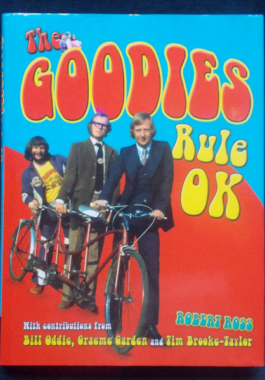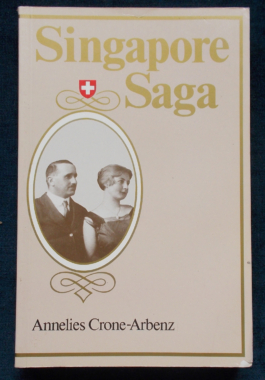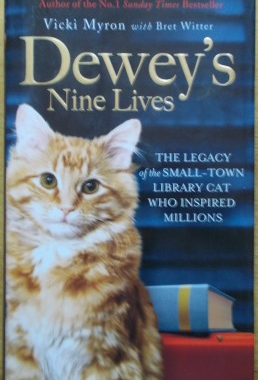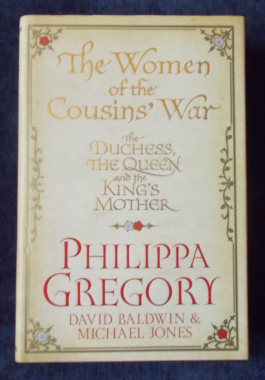- Sorry, this product is unavailable.
-
 The true and tragic story of the the disastrous Ballantyne Department Store Fire in 1947 and the terrible injustices heaped on Fire Officer Jim Burrows, who was in command of the fire crew and rescue on that terrible night. Includes part of the 1948 Royal Commission report.
The true and tragic story of the the disastrous Ballantyne Department Store Fire in 1947 and the terrible injustices heaped on Fire Officer Jim Burrows, who was in command of the fire crew and rescue on that terrible night. Includes part of the 1948 Royal Commission report. -
 For the first generation of young white Australians, life was largely a battle for survival. But a large number did survive and with their parents - petty criminals, Marines and free settlers - became the nucleus of a nation. For those born to wealthy families, the path ahead was clear: they would be the founders of colonial dynasties, businessmen, landowners and society leaders. But for the less privileged were the slums that by the mid-nineteenth century were as terrible as any in the northern hemisphere . The gold rushes, two World Wars and the Great Depression affected the lives of Australian children and then came the immigration boom of the 1950s and 1960s, changing and enriching the predominantly Anglo-Saxon society. A fascinating book covering the children of Australia - and all aspects of being a child in Australia - since 1788. Illustrated with colour and black and white photos.
For the first generation of young white Australians, life was largely a battle for survival. But a large number did survive and with their parents - petty criminals, Marines and free settlers - became the nucleus of a nation. For those born to wealthy families, the path ahead was clear: they would be the founders of colonial dynasties, businessmen, landowners and society leaders. But for the less privileged were the slums that by the mid-nineteenth century were as terrible as any in the northern hemisphere . The gold rushes, two World Wars and the Great Depression affected the lives of Australian children and then came the immigration boom of the 1950s and 1960s, changing and enriching the predominantly Anglo-Saxon society. A fascinating book covering the children of Australia - and all aspects of being a child in Australia - since 1788. Illustrated with colour and black and white photos. -
 A kitten called Twinkle, a giant Dougal, over-sized flat caps and black puddings, a trandem and the chorus of The Funky Gibbon are just some of the unforgettable Goodie delights that burned their way indelibly into the world's collective consciousness in the 70s. The undisputed kings of comedy - Tim Brooke-Taylor, Graeme Garden and Bill Oddie created the most inventive, imaginative and consistently hilarious of the day and this is a celebration of their genius. Nothing was sacred - from the Royal Family to Mary Whitehouse. Packed with photographs, memorabilia and recollections from Tim, Bill, Graeme and The Goodies directors, it's the amazing story of how this talented trio from Cambridge University became a cult phenomenon that had plenty of pratfall and silliness for kids and plenty of 'saucy bits' for the grown-ups as well! Includes a list and synopsis of every episode from all nine series.
A kitten called Twinkle, a giant Dougal, over-sized flat caps and black puddings, a trandem and the chorus of The Funky Gibbon are just some of the unforgettable Goodie delights that burned their way indelibly into the world's collective consciousness in the 70s. The undisputed kings of comedy - Tim Brooke-Taylor, Graeme Garden and Bill Oddie created the most inventive, imaginative and consistently hilarious of the day and this is a celebration of their genius. Nothing was sacred - from the Royal Family to Mary Whitehouse. Packed with photographs, memorabilia and recollections from Tim, Bill, Graeme and The Goodies directors, it's the amazing story of how this talented trio from Cambridge University became a cult phenomenon that had plenty of pratfall and silliness for kids and plenty of 'saucy bits' for the grown-ups as well! Includes a list and synopsis of every episode from all nine series. -
 From the author of I Can Jump Puddles. It's time to visit Alan Marshall's Australia: sitting on the sliprail exchanging yarns, driving a buggy down long dusty trails. And meet such wonderful characters as Lance Skuthorpe, who tethered a bull in Bourke Street and offered five quid to anyone who could ride him for half a minute and Binjarrpooma, the terror of Arnhem Land. Make a visit to an Australia that is now gone.
From the author of I Can Jump Puddles. It's time to visit Alan Marshall's Australia: sitting on the sliprail exchanging yarns, driving a buggy down long dusty trails. And meet such wonderful characters as Lance Skuthorpe, who tethered a bull in Bourke Street and offered five quid to anyone who could ride him for half a minute and Binjarrpooma, the terror of Arnhem Land. Make a visit to an Australia that is now gone. -
 This memoir, which Gypsy began as a series of pieces for The New Yorker, contains photographs and newspaper clippings from her personal scrapbooks and an afterword by her son, Erik Lee Preminger. By turns touching and hilarious, Gypsy describes her childhood trouping across 1920s America on the vaudeville circuit through to her rise to stardom as The Queen of Burlesque in 1930s New York - where gin came in bathtubs, gangsters were celebrities, and Walter Winchell was king. Her story features outrageous characters - among them Broadway’s funny girl, Fanny Brice, who schooled Gypsy in how to be a star; gangster Waxy Gordon - who bears an intriguing resemblance to Al Capone - who paid for her to have her teeth fixed; and her indomitable mother, Rose, who lived by her own version of the Golden Rule: “Do unto others … before they do you.” And here's a tale from her revue days: The manager had advertised the show as 'fifty beautiful girls, 45 glamorous costumes... Lee says, "And I was the one that convinced the customers that I was the other five girls!" With black and white photographs - and here's what some other readers thought: https://www.goodreads.com/book/show/143890.Gypsy?from_search=true&from_srp=true&qid=mqwbhqxEnt&rank=1
This memoir, which Gypsy began as a series of pieces for The New Yorker, contains photographs and newspaper clippings from her personal scrapbooks and an afterword by her son, Erik Lee Preminger. By turns touching and hilarious, Gypsy describes her childhood trouping across 1920s America on the vaudeville circuit through to her rise to stardom as The Queen of Burlesque in 1930s New York - where gin came in bathtubs, gangsters were celebrities, and Walter Winchell was king. Her story features outrageous characters - among them Broadway’s funny girl, Fanny Brice, who schooled Gypsy in how to be a star; gangster Waxy Gordon - who bears an intriguing resemblance to Al Capone - who paid for her to have her teeth fixed; and her indomitable mother, Rose, who lived by her own version of the Golden Rule: “Do unto others … before they do you.” And here's a tale from her revue days: The manager had advertised the show as 'fifty beautiful girls, 45 glamorous costumes... Lee says, "And I was the one that convinced the customers that I was the other five girls!" With black and white photographs - and here's what some other readers thought: https://www.goodreads.com/book/show/143890.Gypsy?from_search=true&from_srp=true&qid=mqwbhqxEnt&rank=1 -
 The inspirational autobiography by one of the most captivating American heroes of modern times, Capt. ‘Sully’ Sullenberger - the pilot who miraculously landed a crippled US Airways Flight 1549 in New York’s Hudson River, saving the lives of all 155 passengers and crew. On January 15, 2009, the world witnessed an emergency landing when Captain "Sully" Sullenberger skillfully glided US Airways Flight 1549 onto the Hudson River, saving the lives of all 155 passengers and crew. His cool actions not only averted tragedy but made him a hero and an inspiration worldwide. His story is one of dedication, hope, and preparedness, revealing the important lessons he learned through his life, in his military service, and in his work as an airline pilot. Even in these days of conflict, tragedy and uncertainty, there are values still worth fighting for; challenges can be met. Cover shows Tom Hanks as 'Sully' in the film of the same name. With colour photographs.
The inspirational autobiography by one of the most captivating American heroes of modern times, Capt. ‘Sully’ Sullenberger - the pilot who miraculously landed a crippled US Airways Flight 1549 in New York’s Hudson River, saving the lives of all 155 passengers and crew. On January 15, 2009, the world witnessed an emergency landing when Captain "Sully" Sullenberger skillfully glided US Airways Flight 1549 onto the Hudson River, saving the lives of all 155 passengers and crew. His cool actions not only averted tragedy but made him a hero and an inspiration worldwide. His story is one of dedication, hope, and preparedness, revealing the important lessons he learned through his life, in his military service, and in his work as an airline pilot. Even in these days of conflict, tragedy and uncertainty, there are values still worth fighting for; challenges can be met. Cover shows Tom Hanks as 'Sully' in the film of the same name. With colour photographs. -
 Part One of this autobiography relates the dramatic escape to Australia of three young Swiss sisters during the Japanese invasion of Singapore, then traces their gradual and complete adaption to the Australian way of life by the youngest sister, Annelies. Part Two is the story of their father, the Swiss Consul and their mother Gritli, who remained in Singapore at their posts in dedication to their community. This second part is translated from the recently discovered original diaries of their father, Rudolph Arbenz.
Part One of this autobiography relates the dramatic escape to Australia of three young Swiss sisters during the Japanese invasion of Singapore, then traces their gradual and complete adaption to the Australian way of life by the youngest sister, Annelies. Part Two is the story of their father, the Swiss Consul and their mother Gritli, who remained in Singapore at their posts in dedication to their community. This second part is translated from the recently discovered original diaries of their father, Rudolph Arbenz. -
 Here is the definitive history of Qantas, tracing the formation of the Queensland and Northern Territory Aerial Services, its struggles in outback Queensland, its steady growth and the rivalry as the competition increased. Plenty of archival black and white photographs.
Here is the definitive history of Qantas, tracing the formation of the Queensland and Northern Territory Aerial Services, its struggles in outback Queensland, its steady growth and the rivalry as the competition increased. Plenty of archival black and white photographs. -
 Here is the beginning of European settlement in New Zealand. What manner of men were they? Where did they come from and how did they make the journey there? What sort of life did they expect? Did they prosper? Many books mention the pioneer farmers of New Zealand but few are devoted entirely to them. This volume is about what it was like to be one of those pioneers; a vivid picture of the lives of those men - and women, rich and poor, proud and humble, scholarly and unlettered, who broke in the soil of New Zealand in the first days of European settlement. It's their story, told through diary excerpts, letters and newspaper articles of the time. Illustrated with black and white photographs.
Here is the beginning of European settlement in New Zealand. What manner of men were they? Where did they come from and how did they make the journey there? What sort of life did they expect? Did they prosper? Many books mention the pioneer farmers of New Zealand but few are devoted entirely to them. This volume is about what it was like to be one of those pioneers; a vivid picture of the lives of those men - and women, rich and poor, proud and humble, scholarly and unlettered, who broke in the soil of New Zealand in the first days of European settlement. It's their story, told through diary excerpts, letters and newspaper articles of the time. Illustrated with black and white photographs. -
 Henderson spent five years collecting New Zealand 'swagger' stories - those of men and women of the road - with such wonderful characters as John the Baptist, Russian Jack, Barney White Rats, The Shiner and many more you couldn't possibly invent, from the early days of New Zealand. With beautiful line drawings by Mark Dunstan.
Henderson spent five years collecting New Zealand 'swagger' stories - those of men and women of the road - with such wonderful characters as John the Baptist, Russian Jack, Barney White Rats, The Shiner and many more you couldn't possibly invent, from the early days of New Zealand. With beautiful line drawings by Mark Dunstan. -

The sequel to Dewey. He was found, an abandoned ginger kitten, on a freezing morning in the Returned Books chute of a American small town library. He moved into the library - and into the hearts of millions of readers the world over. This volume contains Dewey stories not included in the first book. -

Acting My Life: Ian Holm
$10.00After making a brilliant impact at the RSC in the 1960s, Ian Holm consolidated his reputation with work for Harold Pinter then turned to film, appearing in cult/popular classics such as Alien, Chariots of Fire, The Fifth Element and Lord Of The Rings. His varied career has seen him play an android, Napoleon, King Lear, Hercule Poirot, Lewis Carroll, a hobbit and much more. Large Print edition. -
 As the 1940s came to a close, the dream factory of Hollywood was in turmoil: McCarthyism was a dark shadow, television had begun to make inroads and there was the realism of post-war society. But five young actors came west: James Dean; Rock Hudson; Montgomery Clift; Elizabeth Taylor and Natalie Wood. They became the idols of their generation. As well as their stories, this book encapsulates the glamour, the hype, the delusions and scandals that was the Hollywood of the Fifties. With black and white photographs.
As the 1940s came to a close, the dream factory of Hollywood was in turmoil: McCarthyism was a dark shadow, television had begun to make inroads and there was the realism of post-war society. But five young actors came west: James Dean; Rock Hudson; Montgomery Clift; Elizabeth Taylor and Natalie Wood. They became the idols of their generation. As well as their stories, this book encapsulates the glamour, the hype, the delusions and scandals that was the Hollywood of the Fifties. With black and white photographs. -
 Put Les Darcy in a uniform and the men of Australia will march to hell behind him. That was the message Australia's great 'Blacksmith Boxer' was getting as debate about conscription raged in the middle of World War I. The problem was that Les Darcy didn't want to march at the fore of such a procession, nor to such a destination. He wanted to continue what he had been doing to extraordinary acclaim before the war began - taking on the best boxers the world could throw at him, and lifting his entire family out of poverty as he did so. Torn between the duty he felt he owed his family, and the duty many felt he owed his country, Les made his choice ... and faced the consequences. And so unfolds a ballad of love, war, betrayal, mystery, patriotism and heroism; a ballad of a champion. Illustrated with black and white photographs.
Put Les Darcy in a uniform and the men of Australia will march to hell behind him. That was the message Australia's great 'Blacksmith Boxer' was getting as debate about conscription raged in the middle of World War I. The problem was that Les Darcy didn't want to march at the fore of such a procession, nor to such a destination. He wanted to continue what he had been doing to extraordinary acclaim before the war began - taking on the best boxers the world could throw at him, and lifting his entire family out of poverty as he did so. Torn between the duty he felt he owed his family, and the duty many felt he owed his country, Les made his choice ... and faced the consequences. And so unfolds a ballad of love, war, betrayal, mystery, patriotism and heroism; a ballad of a champion. Illustrated with black and white photographs. -
 Many have lived through what Eugenia Ginzberg (1906 - 1977) survived, yet very few can narrate it and fewer still could write about. Eugenia survived - physically, morally and spiritually - Kolyma in Siberia, the worst province of Stalin's empire after being falsely accused of terrorism in 1937. She spent two years in the infamous Lefortovo and Butyrka prisons in Moscow before being transported via prison train and cargo hold to Magadan to work in a camp hospital and thence to Kolyma. She was repeatedly snatched from extinction by assignments to inside work - in hospitals, nurseries, kitchens, farms - all of which, with their hapless inmates and all-powerful supervisors, she describes in vivid detail, never losing interest in her interest in human nature or her skills at observation. In this grim place, she met her future husband - Anton Walter, a German Catholic homeopathic physician - and convicts were not permitted to form 'attachments'. She would spend 18 years in exile...
Many have lived through what Eugenia Ginzberg (1906 - 1977) survived, yet very few can narrate it and fewer still could write about. Eugenia survived - physically, morally and spiritually - Kolyma in Siberia, the worst province of Stalin's empire after being falsely accused of terrorism in 1937. She spent two years in the infamous Lefortovo and Butyrka prisons in Moscow before being transported via prison train and cargo hold to Magadan to work in a camp hospital and thence to Kolyma. She was repeatedly snatched from extinction by assignments to inside work - in hospitals, nurseries, kitchens, farms - all of which, with their hapless inmates and all-powerful supervisors, she describes in vivid detail, never losing interest in her interest in human nature or her skills at observation. In this grim place, she met her future husband - Anton Walter, a German Catholic homeopathic physician - and convicts were not permitted to form 'attachments'. She would spend 18 years in exile... -
 Elizabeth Woodville, The White Queen; Margaret Beaufort, The Red Queen; and Jacquetta, Lady Rivers, The Rivers Woman are the subjects of the first three novels in Philippa Gregory's Cousins' War series and of the three biographical essays in this book. Philippa Gregory, together with historians David Baldwin and Michael Jones, both leading experts in their field, helped Philippa to research the novels, tell the extraordinary 'true' stories of the life of these women who until now have been largely forgotten by history, their background and times, highlighting questions which are raised in the fiction and illuminating the novels. With a foreword by Philippa Gregory - in which Philippa writes revealingly about the differences between history and fiction and examines the gaps in the historical record - and beautifully illustrated with rare portraits.
Elizabeth Woodville, The White Queen; Margaret Beaufort, The Red Queen; and Jacquetta, Lady Rivers, The Rivers Woman are the subjects of the first three novels in Philippa Gregory's Cousins' War series and of the three biographical essays in this book. Philippa Gregory, together with historians David Baldwin and Michael Jones, both leading experts in their field, helped Philippa to research the novels, tell the extraordinary 'true' stories of the life of these women who until now have been largely forgotten by history, their background and times, highlighting questions which are raised in the fiction and illuminating the novels. With a foreword by Philippa Gregory - in which Philippa writes revealingly about the differences between history and fiction and examines the gaps in the historical record - and beautifully illustrated with rare portraits. -
 Here is the story of seven years of patrolling by one of the Australian Inland Mission padres and his wife. Their only home was the vehicle in which they travelled and their parish was the northern third of Queensland - the then-forgotten 'top-end' of Australia. Written with humour, warmth and a very human fellow-feeling together with a love for her country and the end result is a story with plenty of information and interest regarding the Australian Inland Mission and its work.
Here is the story of seven years of patrolling by one of the Australian Inland Mission padres and his wife. Their only home was the vehicle in which they travelled and their parish was the northern third of Queensland - the then-forgotten 'top-end' of Australia. Written with humour, warmth and a very human fellow-feeling together with a love for her country and the end result is a story with plenty of information and interest regarding the Australian Inland Mission and its work. -

As a girl in England, Margaret was often in trouble with her mother for clumping through the house - often leaving a trail of oats and chaff on the carpet. When she came to Australia, her boots became an everyday part of her attire. In the Queensland outback, despite the dual handicap of being both a 'Pommie' and a woman, she strove for - and won - acceptance in the tough, male-dominated world of droving trails, mustering camps and cattle stations. Margaret has a keen eye for character- and the bush, she found, is peopled by 'characters'. She tells her story of being an apprentice cattle hand and later a wife and mother - often the only white woman for miles around - with lively humor.


